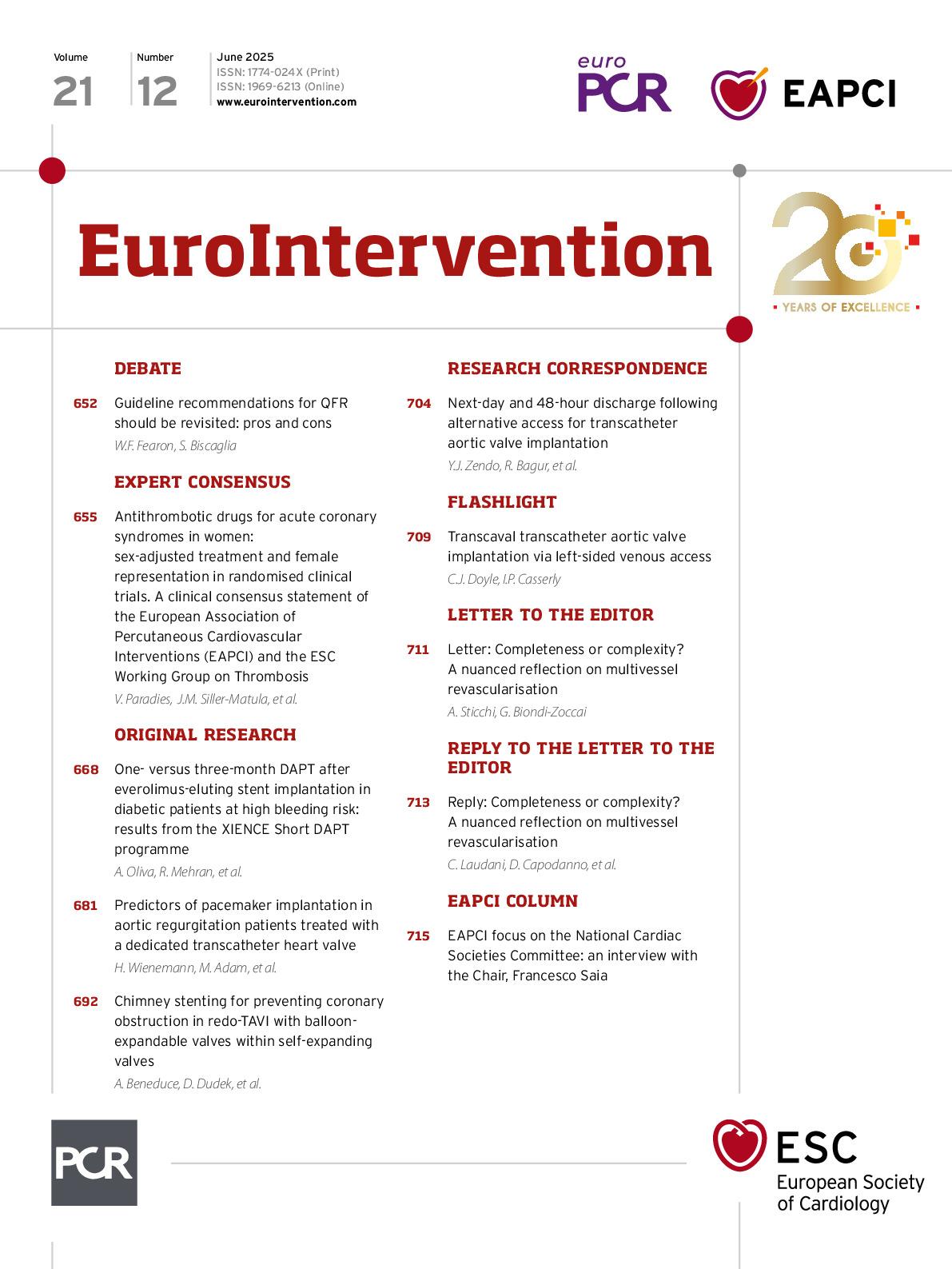Abstract
Background: Coronary obstruction (CO) is a major concern in redo-transcatheter aortic valve implantation (TAVI) for failing supra-annular self-expanding transcatheter aortic valves (TAVs).
Aims: This ex vivo study tested chimney stenting (ChS) for redo-TAVI in patients with high-risk anatomy for CO by evaluating stent outcomes and the feasibility of subsequent coronary access (CA) for percutaneous coronary intervention (PCI).
Methods: Patient-specific anatomical models were three-dimensionally printed from pre-TAVI computed tomography (CT) scans. Index TAVI was performed using ACURATE neo2 (ACn2) or Evolut PRO (EvPRO) with varying degrees of commissural misalignment (CMA). Redo-TAVI with bilateral ChS was performed in a pulsatile flow simulator using the balloon-expandable SAPIEN 3 Ultra (S3U) at different implant depths. Stent expansion was measured by intravascular ultrasound. Stent interactions and distortion angles were assessed by micro-CT. CA for PCI was attempted subsequently.
Results: In the tested redo-TAVI combinations, interactions with index TAV frames or the aortic wall caused chimney stent distortion and underexpansion. A high S3U implant within an EvPRO resulted in the greatest stent underexpansion (complete crush) and vertical distortion (up to 75°). Severe CMA of the index TAV resulted in the greatest lateral stent distortion (up to 41° for ACn2 and 53° for EvPRO). The combination of CMA of the index TAV and a high S3U implant rendered CA and PCI after ChS unfeasible in 75% of cases.
Conclusions: ChS during redo-TAVI with the S3U within a degenerated ACn2 or EvPRO valve is susceptible to interactions between the coronary stent and the TAV frames or the aortic wall, leading to stent distortion and underexpansion, which might compromise procedural efficacy and future CA.
Sign up for free!
Join us for free and access thousands of articles from EuroIntervention, as well as presentations, videos, cases from PCRonline.com




